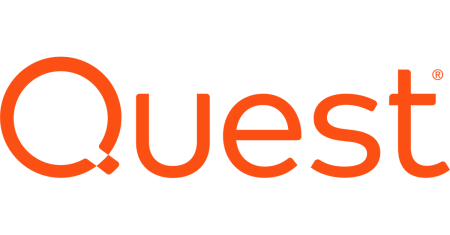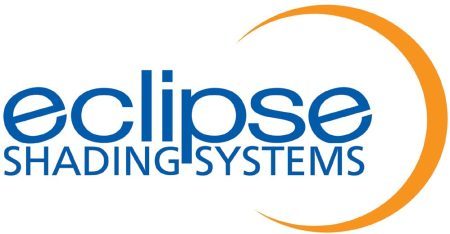SaaS Marketing
Digital Marketing Services for SaaS Companies
Most SaaS brands struggle to generate consistent leads and sales. We fix that! We develop custom digital marketing services proven to get more customers. Request a free strategy from our experts!




Real Results for Saas Companies
Compete and win. We keep you ahead of a changing SaaS industry so you don’t even have to think about it. We want you to be our next client success story!







HigherVisibility has been a huge help from the moment we hired them. The impact they have had on our lead flow can’t be understated. Highly recommend!
What To Expect With Your SaaS Marketing Campaign
Every person on your campaign is regularly re-certified at the highest level; so you can keep growing while the competition fumbles.

































-
01.Data GatheringAn initial kick-off meeting will be held with your Brand Success Manager (BSM) and any key personnel who will be working with you. During this call, we will ask questions to gain a deep understanding of your business, identify your main goals & important KPIs, and establish a communication cadence with primary stakeholders.
-
02.Internal StrategiesAfter completing your kick-off meeting, an internal strategy session will occur with all key personnel on the campaign to develop our proposed plan & ongoing strategy customized to achieve your goals.
-
03.Insite DashboardOnce set up, your BSM will schedule a walkthrough of the InSite Dashboard. This is a vital tool for the success of your campaign. A few of its benefits: performance tracking, campaign task tracking, strategy insights, and downloadable reports.
-
04.Scheduled MeetingsWe’ll set regularly scheduled meetings with your BSM to discuss objectives, campaign performance, upcoming deliverables, strategy review & approval, and general feedback.
-
05.Quarterly ReviewsQuarterly campaign review meetings with your BSM to discuss long-term objectives, campaign performance, ongoing strategy, tactical adjustments, etc.
-
06.Strategy AdjustmentsThroughout the campaign, your BSM and all key personnel will be analyzing data to make strategic adjustments catered towards achieving your goals.
Tired of Dealing With SaaS Marketing Challenges?
If any of these challenges sound familiar, meet HigherVisibility. We’ve worked with numerous SaaS industry clients to solve these same challenges. Our team is ready to help you!

We have seen a significant growth in website traffic, quality online leads, and sales since we started working with HigherVisibility. Highly recommend!
Software-as-a-Service — more commonly referred to by its acronym, SaaS — is a mainstream cloud-based software that many companies, shops, and corporations are taking advantage of. It’s no surprise why it’s so common among businesses: it’s a winning, tried-and-true form of marketing. If you’re looking to implement SaaS for your business, no matter how big or small, or if you’re interested in a SaaS product, we’ve got strategies as well as a few tips and tricks to help you get started. Here’s our guide to transforming into an SaaS business and perfecting your SaaS marketing strategies.
What Is SaaS?
As you might’ve guessed, there’s a plethora of benefits to SaaS business. With SaaS, the data you have can be accessed anywhere, from any device, so long as you have a stable internet connection. Software vendors are like the ones in charge — they’re responsible for maintaining the databases and servers for an app.
SaaS products don’t need hardware (so buyers can outsource the primary tech responsibilities), and SaaS is paid via a subscription-based model.
SaaS vs. ‘The Cloud’
The cloud usually refers to a broader concept of servers, databases, and computers that are connected so a user can gain easy access to their data. A private cloud shares computing power between the employees of a business, as opposed to sharing it with the general public. That being said, your IT team will need to handle all the upkeep and maintenance of a private cloud.
Although all clouds are run via software, SaaS is the actual software apps that are used through the cloud. It’s faster, easier, and less expensive for SaaS users. What’s not to like about that?
SaaS Companies and Data: Who Owns It
Nowadays, privacy is a consistent concern among not only those who surf the internet for fun but for businesses and companies, too. Usually, you’ll own your own data, even though it’s in a cloud. The majority of SaaS contracts will mention your right to the data. You’ll also be able to back up your data and export it at any time.
If you’re worried about safety, most software providers will do their best to show you just how safe your data will be in their cloud. Most providers only use highly secure cloud services, and the reality is your data is probably more at risk in-house.
Even if your provider goes out of business, the data is still usually yours to keep.
Limitations of SaaS
In all honesty, there aren’t many limitations to SaaS products. The only one that’s worth mentioning is the fact that SaaS needs a reliable internet connection. However, most companies’ internet connections are perfect for SaaS.
Like other internet-based technologies, it’s possible that there will be technical difficulties from time to time. However, some SaaS vendors have an “offline” mode so employees can continue to work even if the power or internet goes out.
SaaS Marketing Strategies
Although SaaS marketing strategies will vary based on your business and your aspirations for the company, there are still some key takeaways that your SaaS marketing team can improve with.
SaaS Marketing Flywheel
The flywheel isn’t an uncommon visualization tool. In fact, we’ll use it to describe four simple steps — a clear cut business model — you can take to create a successful SaaS marketing strategy and get your company to the next level.
1. Attract
The first step of your SaaS marketing strategy should be to attract brand leads. To do this, let’s start by talking about what metrics to track. You should know:
- How many people visit your company’s website
- The bounce rate — the percentage of people who visit your site but then leave instead of clicking around
- The conversion rate, from website visitor to brand lead
2. Engage
After the first step, we can move on to the second: engage. Let’s say you’ve hooked a potential customer. Now what? It’s time for the onboarding process.
You’ll need to engage them so that you can sort them into your database. If it seems like you’re on the same page as this new customer, perhaps get ready for a sale.
In terms of engagement, you can take a look at email engagement — such as the click-through or open rate — and landing page interactions.
3. Close
For the third step, you might be less involved. Typically, a sales team will take over this phase. However, you should still be paying attention to factors like the customer lifetime value (CLTV) and the customer acquisition cost (CAC), if you can. These factors and the resulting teamwork between the two just goes to show how connected SaaS marketing and SaaS sales are.
4. Delight
Once you have new customers, the ultimate goal of SaaS marketing is to keep them coming back for more. You can do this by making your clients happy enough that they’d recommend the business to a friend or family member.
During this step of the process, you’ll want to consider things like your online reviews (be them on your website or on Google), any potential subscription upgrades, and your net promoter score (NPS).
SaaS Marketing Tips and Tricks
We also have some SaaS marketing tips and tricks that will help you continue to implement your business model and your SaaS marketing strategy to keep the company’s growth.
Getting to Know Your Brand
As a business, you probably understand how critical branding is to a company’s success. However, now is a great time to reevaluate your brand and make sure it’s not only still reflecting your aspirations for the business, but that it’s also still relevant with your target audience.
Because there’s no “physical location” with SaaS, you need to make sure your brand is SaaS-friendly, so to speak. If you’re touching up your brand, take a close look at your design, personality, and messaging or the content that you churn out.
If you don’t have personas for your ideal target audience members, now would be an excellent time to create a few. People are born to appreciate a good narrative, so SaaS marketers will recommend that you flesh out these personas and highlight potential consumers’ pain points.
In a similar vein, feel free also to tell customer success stories — another form of narrative that resonates with audiences. Make sure with any narrative that you’re using conversational, everyday language to connect with as many people as possible.
Lastly, you want to pay special attention to your visual branding. That means high-quality photos, videos, and graphics that show your company’s features. Having blurry or low-quality visual assets can make your business look unprofessional, and the lack of aesthetics can actually drive new customers away.
Optimizing Your Website
Even if you already have a functioning website, while you’re integrating SaaS marketing strategies is a perfect time to revamp your site. Why? It’s a fantastic way to engage with potential consumers and build a network. It’s also an excellent strategy for attracting new customers in the first place.
Your website will broadcast to potential customers how your company is better than competing companies. Remember those first two steps from the SaaS marketing flywheel, attract and engage? Well, your website will be a significant tool in successfully completely those first two steps. Is your landing page up to date? If not, update it.
If you don’t already include these on your site, consider adding:
- Customer testimonials with positive, enthusiastic quotes
- Blogging with SEO-friendly content
- Any honors or awards your company might’ve earned
- Links to coverage of your company in the media
- A live chat options for customers
Generating Traffic through SEO
Generating traffic through search engine optimization (SEO) is more important than ever. The traffic you get through Google searches can lead to inbound marketing, in which new customers find your company themselves.
People rarely click to the next page of Google search results, which means it’s essential that your company ranks in the top search results. That’s where SEO comes in.
Although in the past, companies were able to pack their content full of SEO-friendly keywords to rank high with Google’s algorithm, that’s no longer enough.
Google is intelligent enough to recognize which content is most valuable, so make sure you’re organizing your content correctly and not practicing “keyword stuffing,” which is precisely what it sounds like. If you churn out content that isn’t quality, it’s simply not worth it.
Produce content on topics that your target audience is looking for.
Utilizing Social Media
Social media is, by far, one of the most crucial aspects of SaaS marketing. The truth of the matter is everyone uses social media, be it for personal or professional use. In order to know which social media platforms to utilize, take a deep dive into your target audience. Some safe bets as far as social channels go include:
- YouTube
If your target audience happens to be those in their early 30s, 20s, or even younger, TikTok or Snapchat may be worthwhile social media platforms to invest in. After all, influencer marketing is a moneymaker for a good reason.
You should also be sharing your blog posts and other content on social media in addition to consistently blogging, if you’re not doing so already. Social media allows for conversation between the producer and the consumer, so you can better target your audience through feedback from people in your target audience.
Social posts can be content-based, such as blogging, or they can be answers to FAQs. You can also engage the audience by posing open-ended questions and asking for honest feedback.
Lastly, make sure all your social media channels also include a link to your website’s landing page.
Taking Advantage of Paid Online Advertisements (and Inbound Marketing)
You might be familiar with Hubspot and its content marketing and inbound marketing expertise. Although inbound marketing is a great way to reach your target audience in a more organic way, adding paid online advertisements in addition to your marketing campaign can get your company to the next level.
With paid online advertisements, you’re effectively showcasing your company and its brand to targeted audiences. For example, depending on the ad platform, you’ll be able to target potential customers based on their job titles or the industry they work on, which is perfect for SaaS marketing.
Display ads — you might know them as banner ads — are one viable option. These are very common. You’ll see them at the bottom, top, or sides of a webpage. They’re comparable to billboards in that they usually have a concise message and maybe a visual.
Pay-per-click (PPC) search ads are another excellent option. When you search for a term or phrase on Google, these are the ads you’ll see. Depending on the word or phrase you search, the ads that are displayed should relate directly to what you’re searching for. So if you employ PPC search ads and a potential customer clicks on one, they’ll be redirected to your website.
Video ads are pretty self-explanatory. They’re best used on platforms like Vimeo or YouTube, although they also work with other social channels, like Twitter and Facebook.
Paid social ads offer perhaps the most potential. Because social media is relevant to the majority of people’s lives, paid social media ads are an excellent way to go. They’re very useful in reaching potential customers and often blend into the user’s social media dashboard because they’re strewn in so organically.
When using paid ads, some critical things to keep in mind include:
- The ad placement and which audience you’re trying to target
- The content (are the videos, images, and graphics clear and high-quality?)
- SEO-friendly keywords
The type of advertisements are so diverse today, that you could even advertise via a podcast if you felt comfortable with that platform.
You’ll also want to pay special attention to the metrics once you start using paid online advertisements. Look at the cost per conversion, the cost per click, the click-through rate, and the conversion rate at the very least.
Lead Generation and Nurturing
With SaaS marketing, one of the primary goals is usually to bring in new leads. Let’s take a look at lead generation and how you can nurture those leads.
Free Trials
Although the concept of freemium is popular, if I could recommend only one lead generation tip, it would be to implement free trials into your service. Lots of businesses use free trials, and it’s a great way to attract potential customers and show them what you have to offer in terms of your services and quality.
I’d suggest experimenting with a two-week free trial that allows users to see the features that make your company stand out from the competition.
Email Marketing
In terms of nurturing, I’d recommend taking advantage of email marketing. This marketing tactic is attractive to consumers when companies send a personalized “thank you” email, be it for registering for an upcoming webinar or for merely signing up to your newsletter.
Email marketing is also cost-effective. It allows you to foster engagement with leads while still planting seeds for a sale. This direct communication between you and the lead is also a considerable advantage.
Investigating marketing automation is a worthwhile step, too, especially in specifically timed email campaigns. Mailchimp is a common choice, and it could be a great fit for your company’s marketing plan (and its marketing budget).
Be Consistent
If there’s one takeaway you remember from our SaaS marketing guide, it’s that consistency is vital. As a brand, you need to be consistent in all aspects — your messaging, content, visuals, timing, social media, and product.
If you’re having trouble with consistency, potential marketing tools like an editorial calendar or a social media posting schedule can help you stay on track with your content marketing strategy.
Final Thoughts
Although the scope of SaaS marketing work is extensive, it’s certainly worth the effort you put in primarily through research. The market and its consumers are always evolving, and SaaS marketing is a great way to stay on top of that constant change.
The best thing you can do for your company is to take a long, hard look at what you’d like to achieve through SaaS marketing and go from there. In simpler terms, SaaS marketing is what you make it. Your marketing efforts will determine your success.
HigherVisibility University
Check out our collection of free digital marketing guides, research reports, and best practices aimed at helping you build a better SaaS business.

HigherVisibility rose to the occasion. I knew the SEO process would not produce overnight results but our business is at record levels for the 40+ years we have been in business.